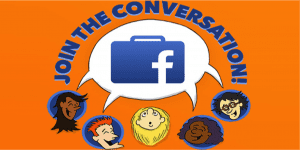 We recently rolled out Facebook at Work at Ketchum. The technology is easy; we’re familiar with it already as it mirrors Facebook. Driving adoption, on the other hand, is the far more exciting and challenging piece.
We recently rolled out Facebook at Work at Ketchum. The technology is easy; we’re familiar with it already as it mirrors Facebook. Driving adoption, on the other hand, is the far more exciting and challenging piece.
I’m not going to tell you Facebook at Work is a silver bullet for internal communication, but it is proving to be an incredibly effective collaboration tool (click to tweet).
Adoption rates exceed 50 percent among employees worldwide and hundreds of colleagues are connecting daily with the platform in conversation, group collaboration and information exchange. Accessed directly, or from the homepage of Ketchum’s intranet, Facebook at Work is a complementary platform to our intranet,email and other channels for sharing agency news and information.
A couple of additional points:
- The user experience is directly transferable from personal Facebook. The integration between personal and professional Facebook is excellent, yet each platform is distinctive, reducing confusion of new adopters
- Mobile and web integration are seamless. The apps are well thought out
Here’s what we’ve learned to date from rolling out Facebook at Work…
1. Agile Management is the Engine
A highly motivated project team focused on clear goals has been critical. Each phase of the rollout was conducted as a sprint. Although inviting 2,500 colleagues to sign-up to a new platform takes time, key performance indicators for each stage have kept us on track.
2. Teamwork is Critical
We built a cross-functional, multi-regional team from the outset. It consisted of internal communications & employee engagement, digital, legal, organisational development, HR, information technology and project management; we also had good support from Facebook along the way. The focus and motivation of this team has ensured the delivery and adoption of Facebook at Work within the business. Different functions have been drawn upon for different sprints. It has resulted in a can-do attitude.
3. Build a Firewall & Make it Easy
Facebook at Work is built as a private community for the employees of an organization. We integrated the platform with Microsoft Active Directory enabling colleagues to sign on with the credentials that they use to access other services. Security is a key benefit of the platform.
4. Stage the Rollout
We’ve rolled out Facebook at Work in three stages, albeit in relatively quick succession: we created a pilot community of 150 people that were already active in communities on Facebook’s public platform; this was followed by a pre-launch to 600 professionals; followed by the formal, full-agency launch.
This approach has allowed us to learn at each stage and make adjustments where necessary. It also enabled advocacy to be built for the platform and avoided it being rejected by the organization.
5. Know Your Community Champions
During each phase of the rollout motivated individuals in each office and community were given access to the platform two weeks before their colleagues came on board. This created advocacy for the platform and established internal champions as a first-line of support.
We asked people to self-select as “Community Champions.” We wanted people that were digital natives but we’ve also worked across different offices and communities. This diversity of social graphs has helped push the platform into every corner of the organization.
6. Email Dissonance is Natural
There’s a huge irony that new communication technologies make great use of their antiquated counterparts to drive adoption. Email was used as the primary mechanism to drive adoption. Facebook at Work creates lots of email prompts. There are emails for sign on, mentions and posts—we quickly learned to throttle these back via settings.
7. We’re all Friends at Work
A key difference between personal Facebook and Facebook at Work is the notion of a friend. You can connect with, or message (via the Work Chat app – think Messenger app), anyone on the platform. We’re all friends at work. It is up to you whom you “follow.” Content is organized in the newsfeed based on your relationships and communities.
Content from Chairman & CEO Rob Flaherty, or colleagues in the Engagement Network, hits the top of my newsfeed.
8. Data Drives Progress
All users have access to basic information about trending posts and the most active groups in your network. System admins are able to access data from across the platform, which has kept us on track during each phase of the rollout. Each week we’ve celebrated and rewarded exemplary best practice execution in the news feed.
9. Nudge Toward the Finish Line
We’ve done lots of internal communications to drive adoption of Facebook at Work including posters, intranet stories, conference calls, office meetings and webinars. And of course email. The biggest successes in driving adoption have come via a series of one- or two-sentence email nudges inviting colleagues to compete a task on the platform each day during the rollout.
10. Playing the Long Game
So, what’s next? For Facebook at Work to become a long-term success we need to fully embed it into our culture and workflow. This is happening organically. In addition, we’re adding it to communication cascades and meetings, as well as finding new applications to engage and encourage sharing on the platform every week.
Feel free to contact me directly or leave a comment below if you think Ketchum can help your organization adopt enterprise social media tools such as Facebook at Work.


